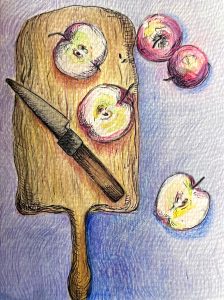It’s 5:20 am when Yasmeen Erritouni lets me into their Capitol Hill apartment. “Welcome to my field site” they whisper as we quietly step out on their patio. The sun hasn’t yet risen, but it is just light enough to see the galaxy gold space needle in the distance. Yasmeen gets to work unpacking and assembling a round net contraption. The sun rises in twenty minutes, which means we have twenty minutes before a local resident male hummingbird will be visiting Yasmeen’s hummingbird feeder for breakfast. We need to be ready when he comes.
Yasmeen studies color in bird feathers. There are two major classes of bird feather colors: pigmentary colors and structural colors. The pigmentary colors include blacks, browns, grays, yellows, oranges, and reds, and appear a consistent color and brightness regardless of the angle from which they are viewed. These colors are determined by the wavelengths of light that the feathers absorb. Structural colors include many blues, and Yasmeen’s area of focus, iridescence. Instead of absorbing light waves like pigmentary colors, structural colors reflect certain wave lengths. In the case of iridescent colors, the wavelengths reflected depend on the angle from which the feather is viewed. This makes the color and brightness of iridescent feathers change as the feather (or bird) moves in relation to a viewer.
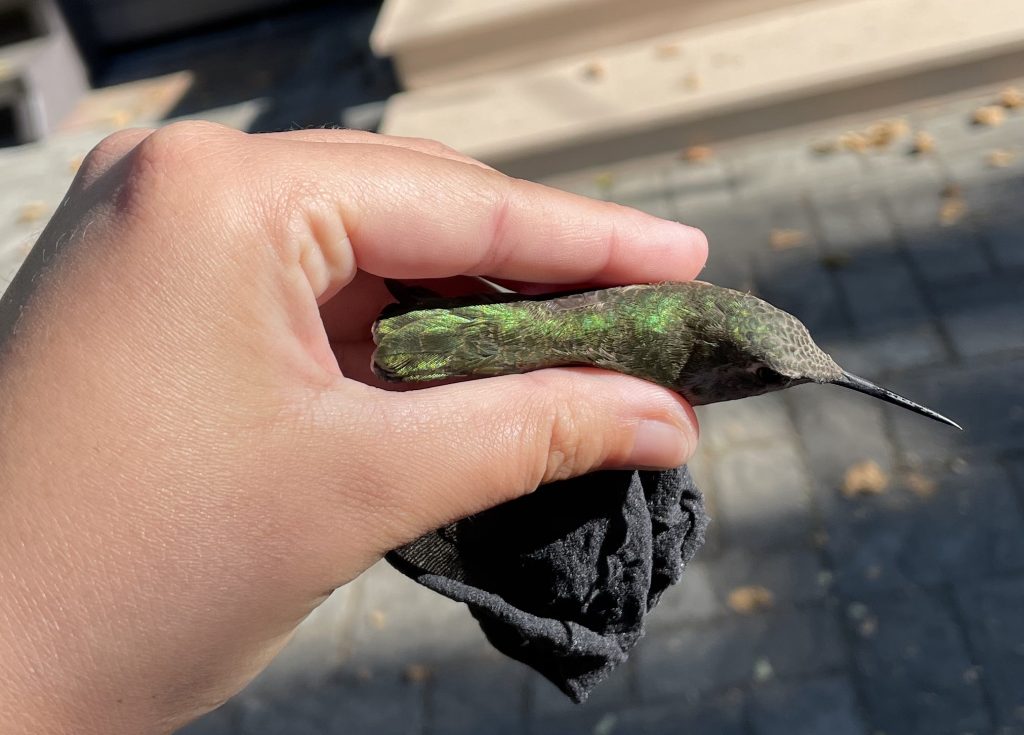
The differences between the appearance of iridescent and pigmentary colored feathers are striking, which is fascinating because iridescent colored feathers contain the same colored pigments (known as melanin granules) as feathers with pigmentary colors. What differentiates these feathers is not the pigments responsible for their colors, but how those pigments are arranged.
Feathers have thin interconnected structures extending from their main shaft known as barbs. Extending off each barb are even tinier structures called barbules. Inside each barbule are masses of melanin granules called melanosomes that determine the feather’s color. In pigmented feathers, barbules are packed with randomly arranged melanosomes. However, in barbules that are structurally colored, the melanin granules are arranged in tight organized layers separated by layers of keratin and sometimes air. These different layers have different refractive properties and reflect back different subsets of light waves, resulting in a shimmery appearance.
Not much is known about how iridescent feathers develop. We do not know how the locations of melanosomes are determined or controlled in the developing iridescent feather nor do we know how the developmental process differs between iridescent and pigmentary feathers. This is why Yasmeen is assembling a hummingbird trap on their patio. They hope to collect developing iridescent and pigmentary feathers to study how development of these colors differ.
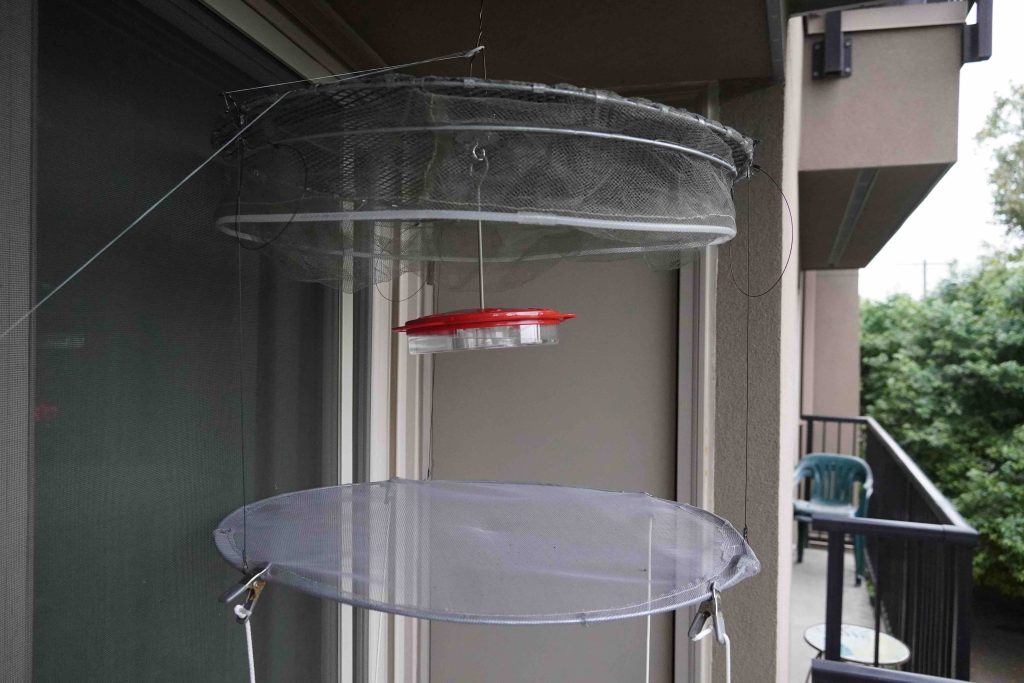

Yasmeen hangs a hummingbird feeder within a cylindrical net. They pull a string and the sides of the net roll up, revealing the feeder within. Releasing the tension on this string causes the sides of the net to drop, hopefully capturing any snacking birds at the feeder. Yasmeen clamps the string to a table covered with lab equipment a distance away. They sit behind the table, watch the feeder, and wait.
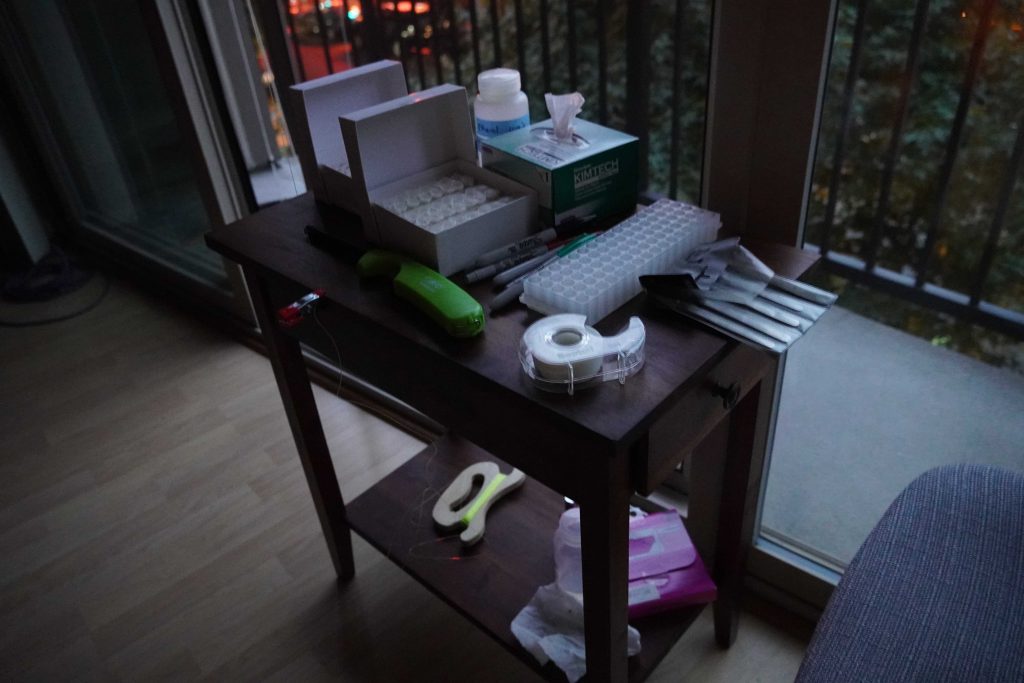
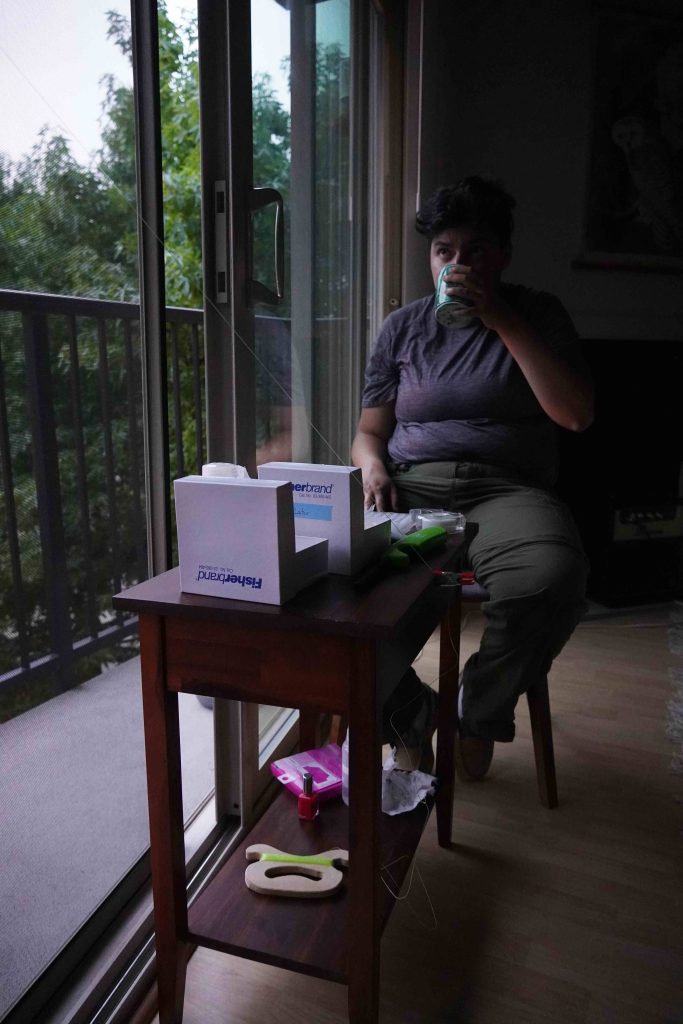
Calypte anna hummingbirds have both iridescent and pigmentary feathers. If we manage to catch a bird this morning, Yasmeen will remove and preserve a few developing feathers of each type before releasing the bird back to the wild. In order to study the development of the feathers, Yasmeen will extract the feathers’ RNA. Cells use RNA to pass the message that a protein should be made from the nucleus (where the DNA is stored) to the protein-assembling machinery elsewhere in the cell. By extracting the RNA from feathers, Yasmeen will be able to tell which proteins the cells in the feather were making as the feather developed. By comparing these proteins between iridescent and pigmentary feathers, they may be able to identify differences between the developmental processes. Most of this work will be performed in the lab. For now, Yasmeen just has to make sure the feathers are preserved so the RNA stays intact.
As the sun rose we heard a sharp squeaking from outside. Peering through the blinds we could see a local resident male Calypte anna perched on a telephone wire. “Its like a toy car trying to start” Yasmeen observes of the bird’s squeaky call. In a moment the hummingbird zipped to the porch, stopped, and swiftly flew away. He is suspicious, which is bad news for Yasmeen. Not only is he unlikely to feed from the feeder himself, but because this is his territory he is likely to chase off any other hummingbirds who might consider paying the feeder a visit. Sure enough we see him a few minutes later chirping as he chases another hummingbird away.
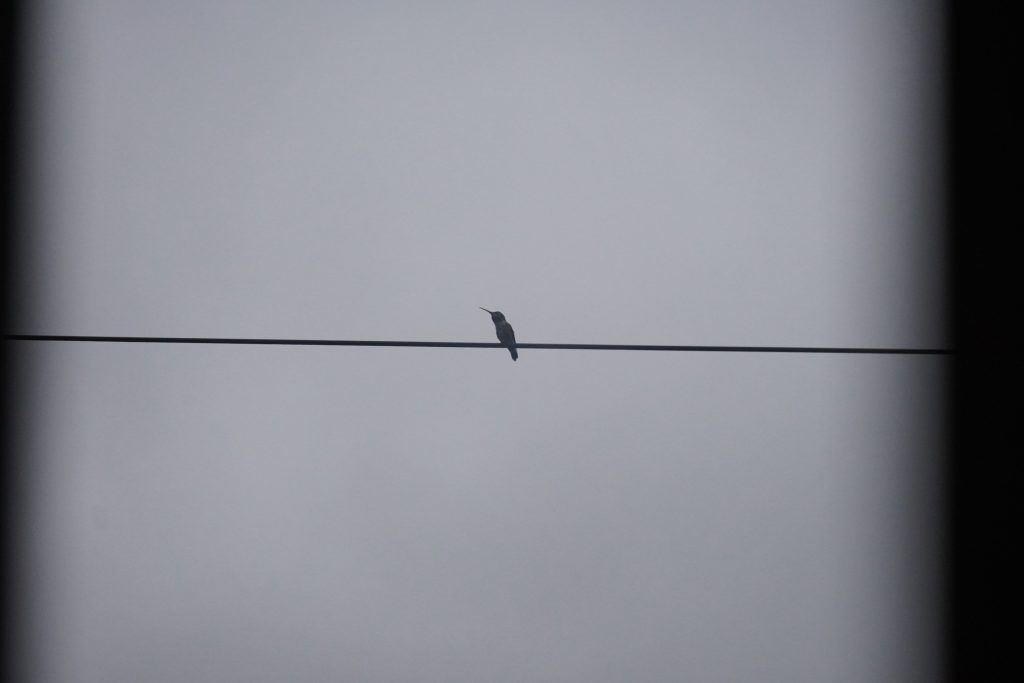
After an hour of waiting we packed up the equipment, having captured no birds and collected no feathers. Field work can be hit or miss, and this morning unfortunately didn’t go our way. Yasmeen has other field sites they can try, sites where the table can be a bit farther from the trap and where the birds are hopefully a bit more naïve. They have had success at Seward Park and have a few feathers to begin their project.
By the time we were packed up and headed to campus the sun was fully in the sky and the Capitol Hill air was alive with birdsong. The hummingbird that evaded capture sat on the telephone wire just beyond Yasmeen’s patio, his iridescent feathers on full display. Hopefully someday we will understand how those feathers came to be, but this day we instead happily settled for admiring their beauty from afar.


